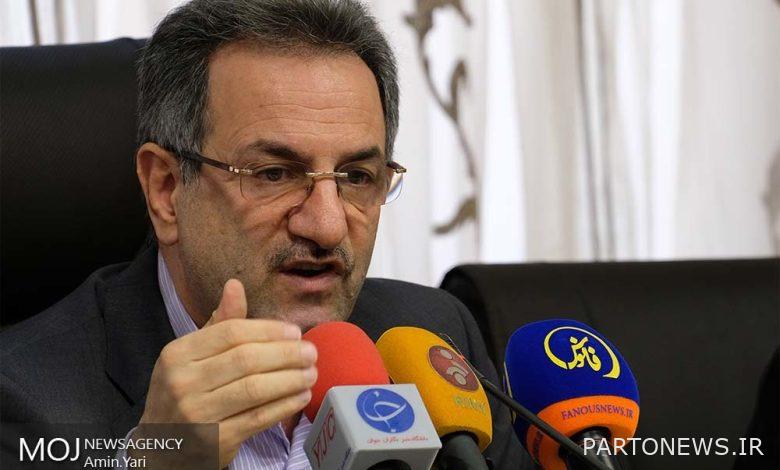Iran ranks fourth in the world

According to Moj News Agency, Anoushirvan Mohseni Bandapi, Head of the Air Quality and Climate Change Research Center, in the last session of the series of promotional scientific events of Environment Week entitled “Consequences of Climate Change in Iran” held by the Cultural Vice Chancellor of Shahid Beheshti University of Medical Sciences, He stated that the consequences of global warming are reduced year by year: it reduces rainfall and snowfall, increases ocean acidification, extinction of plant and animal species, melting of polar ice caps, deforestation, desertification, destructive storms, water shortages, Ecosystem collapse and the risk of deadly heat waves, rising oceans, long-term droughts, air pollution, rising dust, and so on.
“Since the Industrial Revolution, global greenhouse gas emissions have led to a phenomenon called global warming,” he said. Fluorinated oxides and gases have seen global warming, warming, and the melting of polar ice caps since 2000.
Mohseni Bandapi, stating that water shortage has caused concern in all provinces of the country, said: At the end of August 1400, it was announced that about 40% of the rainfall has decreased due to increased heat.
The faculty member of Shahid Beheshti University of Medical Sciences stated that by 2040 Iran will be one of the most stressful regions in the world with water stress above 80%, stating: water resources are less than 90 billion cubic meters and per capita renewable water is less than 1000 cubic meters .
Iran is the third country with gas burners
He pointed out that Iran is the third country in the world after Russia and Iraq with gas burners, reminded: 7 billion cubic meters of gas is wasted through “Feller” and per capita energy consumption in Iran is twice the world average.
The head of the Research Center for Air Quality and Climate Change, stating that drought in Iran is a climatic fact, added: Iran is a dry land with very low rainfall. The average rainfall is 228 mm in the country, which according to reliable sources such as the Ministry of Energy and the FAO, shows a downward trend in rainfall at an average of 1.75 billion cubic meters per year.
Mohseni Bandapi, stating that the rate of decrease in rainfall in the last 30 years is about four times faster than the rate of decrease in rainfall in the last 60 years,: noted: This has shown the intensification of warming in these 30 years.
Referring to the dependence of the country’s water resources on the extraction of surface water and groundwater, which is 45% and 55%, respectively, he clarified: 36% of the country’s area is dry areas, 29% is dry desert areas and only 3% is wet. , Five percent are Mediterranean and seven percent are wetlands.
Iran ranks fourth in the world
This professor of Shahid Beheshti University of Medical Sciences, pointing out that 18 provinces of the country are involved in subsidence, said: Isfahan, Tehran, Kerman and Khorasan Razavi provinces with 31, 30, 24, and 25 percent, respectively, have the highest number (percent) of subsidence They are the earth.
Mohseni Bandapi stated that the predominant subsidence of Tehran occurred in the southwestern regions and districts 17, 18 and 19 of Tehran and this zone is expanding to the east, especially districts 10, 16 and 20 in the south of Tehran. 62 million cubic meters of annual deficit of Tehran-Shahriar plain reservoir is 40 million cubic meters related to Tehran.
He added: “Based on the results of groundwater balance, in the current situation, the average deficit of the reservoir volume of the plains of Tehran province is estimated at 150 million cubic meters per year, of which 40 million cubic meters is related to the deficit of the aquifer in Tehran.”
Prevent water wastage by producing 16.8 billion effluents per day
Mohseni Bandipi added: “Assuming the population of 85 million people in Iran, the daily consumption of approximately 220 liters per day on the conversion factor, 90% of this amount is converted into wastewater, ie a total of 16 billion and 800 million liters of water as effluent that can To be used in agriculture, aquifer feeding and groundwater aquifers.
The head of the Air Quality and Climate Change Research Center addressed other environmental protection strategies and said: reducing deforestation and increasing the speed of change to electric vehicles, desalination of salt water in the northern and southern coasts of the country and its optimal use throughout the country, artificial feeding of aquifers And water recycling with the aim of feeding groundwater aquifers are important issues that require coordination between different organizations.

